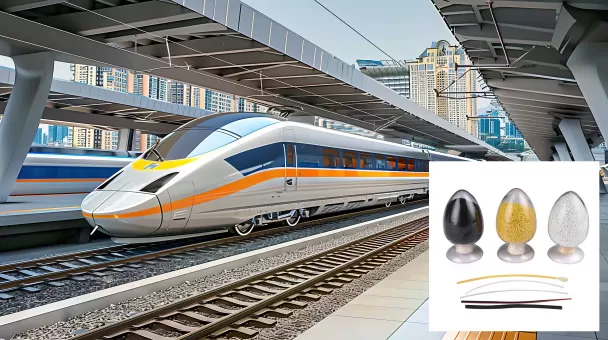
National standard locomotive cable materials are commonly used cable materials for locomotives such as high-speed railways, trains, subways, and light rails in China. They comply with GB/T12528-2008 standards and have excellent oil resistance.
The Specific Product Models Are As Follows
| Locomotive cable material | ||
| National standard locomotive cable material | PFXBK92518GB | Irradiation cross-linked low-smoke halogen-free flame-retardant polyolefin cable material (double oil resistant) for national standard locomotive wire |
The technical standards catalog of China State Railway Group Co., Ltd. contains standards related to high-speed rail locomotive cables. These standards specify the performance requirements, test methods, material selection, and installation specifications of cables to ensure the safety and reliability of cables in high-speed rail locomotives.
TB/T 1484.1-2017: This is the standard for rolling stock cables, which specifies the requirements for power and control cables, including cable dimensions, performance, test methods, etc.
GB/T 18380.35: This standard deals with the combustion performance of cables and specifies the combustion characteristics of cables under specific conditions to evaluate their behavior in fire situations.
GB/T 31198: This is a general standard for rail transit wires and cables, covering requirements for cable design, manufacturing, testing, and acceptance.
Q/CR: This is the corporate standard of China Railway Corporation, which may contain specific requirements for high-speed rail locomotive cables.
These standards ensure that high-speed rail locomotive cables can meet strict performance and safety requirements during design, manufacturing, and use. Manufacturers and suppliers need to follow these standards to produce cable products that meet the requirements. In practical applications, the selection of cable materials usually includes but is not limited to cross-linked polyethylene (XLPE), ethylene propylene rubber (EPR), chlorosulfonated polyethylene (CSM), etc. These materials can provide good heat resistance, chemical resistance and mechanical strength to adapt to the specific working environment of high-speed rail locomotives.
